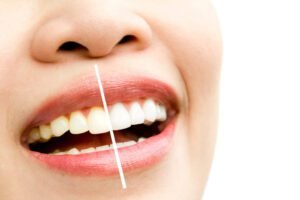When you decide to improve your smile—whether with a deep cleaning, fillings, veneers, implants, or aligners—there are two key moments: before and after the treatment. Understanding who’s responsible for what at each stage helps you achieve better results and, more importantly, maintain them over time.
- The “before” is mainly the responsibility of the dental team: to assess, plan, and perform the treatment safely.
- The “after” depends almost entirely on you: following instructions, using the right tools, and attending checkups. Without that follow-up, even the best treatment can deteriorate.
Think of it as a team effort: we open the path and give you the guidance; you walk that path every day.
Before treatment: what your dentist does (and why it matters)
1) Listening and a complete diagnosis
Your first visit is the time to talk about what’s bothering you, your aesthetic/functional goals, and any medical history: allergies, medications, pregnancy, diseases, bruxism, dental anxiety. All this allows us to personalize your plan. A good diagnosis prevents surprises.
2) Tests when needed
Depending on the case, photographs, X-rays, CBCT scans, intraoral scans, or study models may be required. These exams aren’t an “extra”—they’re what allow precise planning: where to place an implant, how much to prepare for a veneer, whether a composite filling or another option is better, etc.
3) Clear treatment plan
You should know what will be done, why, how much it costs, what alternatives exist, possible risks, and how long it will take. You’ll also be told what your recovery will be like and what care you’ll need. If you’re still unsure which option fits your case, check out our options and get answers at Dental services in Guadalajara.
4) Informed consent
Signing isn’t just a formality—it means you’ve understood the plan and we’re on the same page. It prevents misunderstandings and protects both you and the team.
5) Safe execution
This is where technique, materials, biosafety, pain control, and infection management come in. It’s the “invisible” part for many patients, but it makes the difference between a good result and an exceptional one.
6) Education and realistic expectations
A good treatment includes explaining what you can and can’t expect. For example, well-maintained composite fillings can last for years, but they’re not indestructible; they require polishing and maintenance.
In short: the “before” is on us. If we plan and execute properly, your results start with a solid foundation.
Before treatment: what’s up to you as the patient
1) Share complete and accurate information
Tell us about any illnesses, medications, habits like smoking or teeth grinding, and if you have dental anxiety. This helps us adjust timing, anesthesia, pain management, and precautions.
2) Follow pre-treatment instructions
Sometimes we recommend an antiseptic rinse, thorough cleaning, pre-medication, or fasting. Each instruction has a purpose (less inflammation, fewer bacteria, better healing). If something isn’t clear, ask us—we’re here to help.
3) Clear your doubts and organize your schedule
It’s best to come to the procedure feeling calm and with enough time —no rush—. If we ask you to bring someone along, it’s for your comfort and safety.
✅ Checklist rápido (ANTES)
- I brought my list of medications and allergies.
- I understood the plan, timing, and signed the consent form.
- I followed pre-appointment instructions (hygiene, rinse, medication, fasting if needed).
- I organized my schedule to arrive on time and relaxed.
After treatment: what your dentist ensures
1) Personalized written instructions
They’re not “generic.” They detail how to brush, whether to use floss or interdental brushes, which rinse to use, what to eat and avoid, how to sleep, how much ice to apply, and when to resume exercise. They also include warning signs (severe pain, heavy bleeding, persistent bad odor, mobility).
2) Initial adjustments
After placing a crown, filling, or appliance, we check your bite, contact points, and comfort. Sometimes minor adjustments make a big difference in how well you adapt.
3) Follow-up schedule
We set early checkups (days or weeks after) and medium-term maintenance (every 3–6 months, depending on the case). These visits help catch things you might not notice yet: early inflammation, a spot that traps plaque, a loose retainer, etc.
4) Contact channels
You’ll always know how to reach us if something unexpected comes up. Calling us in time prevents a small issue from turning into a bigger problem.
After treatment: what depends on you (90–100% of long-term success)

Here’s the real key to maintaining your results.
1) Follow all instructions
Stick to a soft diet for the first few days if advised, avoid smoking during healing, take your medication as prescribed, and use cold compresses for the recommended hours. Skipping steps delays your recovery.
2) Use the right tools
The toothbrush alone may not be enough. Depending on your case, you might need floss/interdental brushes, a water flosser, a specific mouthwash, wax (for orthodontics), or a night guard (if you grind your teeth). If you’re unsure how to use them, ask us for a demo—we’ll gladly show you.
3) Attend your checkups
Without follow-up, there’s no maintenance. Even if you feel great, checkups are for prevention. For a professional cleaning with a full evaluation, schedule your appointment at professional dental cleaning and keep your smile in top shape.
4) Let us know right away if something feels off
Severe pain, bleeding that doesn’t stop, persistent bad odor, mobility, sores, something coming loose, a wire poking… Don’t ignore it. Fixing it early is easier and more comfortable.
✅ Checklist rápido (DESPUÉS)
- I’m following my instructions step by step.
- I use my tools (floss, interdental brushes, water flosser, night guard) every day.
- I’ve scheduled my next checkup.
- If I notice pain, bleeding, or mobility, I don’t wait—I call the clinic.
❌ Common mistakes that make you lose results (and how to avoid them)
“I feel fine, I don’t need a checkup anymore.”
- Why it’s a problem: Complications often start silently.
- How to avoid it: Keep up with your checkups. Sometimes we just need to adjust a contact point or polish an area that’s collecting plaque.
“I’m too lazy to use my night guard/floss.”
- Why it’s a problem: The night guard protects your teeth and restorations if you grind; floss prevents inflammation between teeth and crowns.
- How to avoid it: Build a fixed routine (for example, floss + water flosser at night). Set reminders on your phone.
“I ate something hard/seeds on the first day.”
- Why it’s a problem: The wound may reopen, cause more pain, or loosen an adjustment.
- How to avoid it: Stick to a soft diet and follow the recommended rest time.
“Something came loose and I ignored it.”
- Why it’s a problem: A detached bracket, a fractured resin, or a loose screw won’t fix itself.
- How to avoid it: Call as soon as you notice the problem; the solution is often quick.
Practical examples to guide you
Resins and veneers
To keep them looking good for longer, avoid biting hard objects (ice, nails, caps), don’t use your teeth “as tools,” and schedule maintenance polishings. If you’re considering resins or already have them, this guide will be useful: Durability of dental resin. There you’ll see which habits to keep and which to avoid.
Implants
Surgery is just the beginning; what truly matters is your hygiene and your checkups. If food gets stuck between the crown and the neighboring tooth, it may be a loose contact point that can be corrected in the clinic. Keep up with regular cleanings and X-ray checkups as recommended.
Orthodontics (braces or aligners)
Your teeth want to move back to their original position. That’s why retention is essential: wear your retainer as instructed and let us know if it feels loose. If you’re interested in discreet orthodontics, learn more at Invisalign in Guadalajara and ask about care and retention guidelines.
Whitening
During the first few days, your teeth may be more sensitive. Avoid foods that cause staining (coffee, red wine, dark sauces) and apply the desensitizing gel if we’ve recommended it. If you notice strong sensitivity, let us know so we can adjust the timing or concentration.
Your personalized plan in 3 steps
1) Diagnosis + clear expectations
We define the goal (health, function, aesthetics) and determine which treatment will achieve it best. We align timelines, budget, and steps.
2) Evidence-based treatment
We perform the procedure with attention to comfort, safety, and precision. If more than one appointment is needed, we’ll explain the schedule.
3) Maintenance
We’ll give you a written plan with your hygiene routine, the tools you need, and your checkup schedule. Book your next cleaning today at professional dental cleaning so you don’t let plaque, stains, or minor adjustments build up.
Frequently Asked Questions
How often should I go for a checkup after treatment?
It depends on the procedure and your risk level, but as a general rule, every 3–6 months for maintenance. New surgeries and prosthetics usually require early follow-ups (days/weeks).
What happens if I don’t follow an instruction?
It doesn’t always mean “everything is lost,” but it increases the risk of discomfort, infections, fractures, or shifting. The sooner you resume the instructions and come for a checkup, the better.
Why do I sign the informed consent?
Because it confirms that you understood the plan, alternatives, and care instructions. It’s for your safety and ensures that we’re all on the same page.
When should I call today?
If you experience severe pain that doesn’t go away, heavy bleeding, fever, persistent bad odor, mobility, strong irritation, or something that “doesn’t fit.” Call us and we’ll see you as soon as possible.
How do I choose between several options (resin, veneer, crown, aligners)?
It depends on the diagnosis. Compare time, maintenance, durability, and total cost. If you have questions, check out our options at Dental services in Guadalajara and schedule an evaluation.
Conclusion
The before of your treatment is on us: diagnosis, planning, and careful execution. The after is mainly on you: consistency, use of tools, and regular follow-ups. When we walk together through both stages, your results stay beautiful, functional, and healthy for many years.
If you’re looking for personalized care and a clear plan to take care of your smile, we’ll be happy to help.

Best Choice
Start with an evaluation and schedule your maintenance:
- Options and common questions: Dental services in Guadalajara
- Cleaning and comprehensive checkup: professional dental cleaning
- If you already have resins: Durability of dental resin
- Aesthetic orthodontics: Invisalign in Guadalajara





